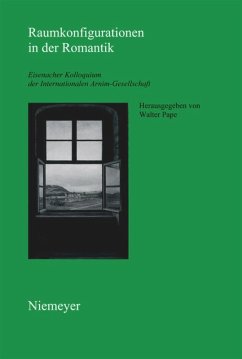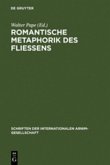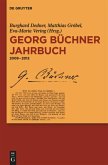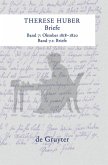Around 1800 there is a new symbolisation and narration of â??internal spacesâ??, spiritual and psychic processes, states or relationships which do not lend themselves to direct observation. This volume focuses on the narrated â??realâ?? spaces of Romanticism; it deals with the cultural encoding of houses and rooms, castles and towers, but also of open spaces â?? the vastness of the sea, riverscapes and distant lands. The analyses are to be understood as a contribution within the currently proclaimed spatial or topographical turn to a new dimensioning of a complex of central importance for both narrative and representational techniques and for cultural anthropology.
Um 1800 werden die 'Räume des Inneren', werden geistige und psychische Prozesse, Zustände oder Beziehungen, die sich unmittelbarer Anschauung entziehen, neu symbolisiert und narrativiert: Gehirnhöhlen werden begehbar, subjektivierte Landschaften werden zu phantastischen Bildern des Inneren. Im Gegensatz dazu erfasst der Band des Kolloquiums vor allem die erzählten 'realen' Räume in ihrer Symbolfunktion und der Art ihrer Narrativierung. Es geht dabei um die kulturelle Kodierung von Häusern und Zimmern, Schlössern und Türmen mit ihren Möglichkeiten des Abschließens und der Öffnung durch Fenster und Türen. Jedoch auch die sich öffnenden Räume (die Weite des Meeres, Flusslandschaften und ferne Länder) werden untersucht. Das Moment des Öffnens und Abschließens von Räumen kann die Perspektive von narratologischen Untersuchungen produktiv lenken, so können zum Beispiel Erfahrungen der Grenze die Figurenzeichnung maßgeblich strukturieren. Die Analysen der erzählten Räume/Raumbrüche und Architekturen und ihrer Beziehung zu ihren 'Bewohnern' tragen im Rahmen des gegenwärtig proklamierten spatial oder topographical turn zu einer neuen Vermessung eines sowohl erzähl- und darstellungstechnisch als auch kulturanthropologisch zentralen Komplexes bei.
Um 1800 werden die 'Räume des Inneren', werden geistige und psychische Prozesse, Zustände oder Beziehungen, die sich unmittelbarer Anschauung entziehen, neu symbolisiert und narrativiert: Gehirnhöhlen werden begehbar, subjektivierte Landschaften werden zu phantastischen Bildern des Inneren. Im Gegensatz dazu erfasst der Band des Kolloquiums vor allem die erzählten 'realen' Räume in ihrer Symbolfunktion und der Art ihrer Narrativierung. Es geht dabei um die kulturelle Kodierung von Häusern und Zimmern, Schlössern und Türmen mit ihren Möglichkeiten des Abschließens und der Öffnung durch Fenster und Türen. Jedoch auch die sich öffnenden Räume (die Weite des Meeres, Flusslandschaften und ferne Länder) werden untersucht. Das Moment des Öffnens und Abschließens von Räumen kann die Perspektive von narratologischen Untersuchungen produktiv lenken, so können zum Beispiel Erfahrungen der Grenze die Figurenzeichnung maßgeblich strukturieren. Die Analysen der erzählten Räume/Raumbrüche und Architekturen und ihrer Beziehung zu ihren 'Bewohnern' tragen im Rahmen des gegenwärtig proklamierten spatial oder topographical turn zu einer neuen Vermessung eines sowohl erzähl- und darstellungstechnisch als auch kulturanthropologisch zentralen Komplexes bei.








